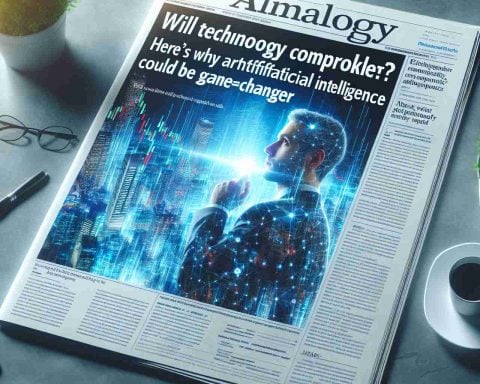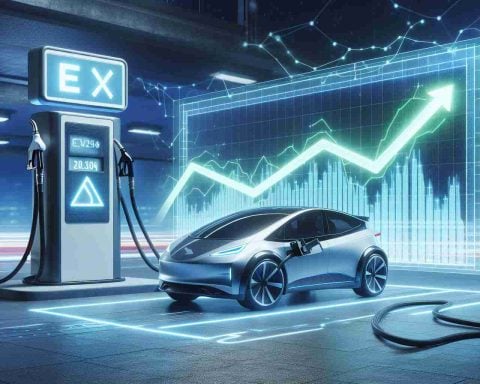In the rapidly evolving world of electric vehicles (EVs), a groundbreaking technology is set to redefine the norms of EV charging: Wireless Power Transfer (WPT). This innovative approach promises not only to ease the adoption of electric vehicles but also to significantly improve the user experience by enhancing convenience and efficiency.
Unlike traditional plug-in systems, WPT technology allows drivers to charge their EVs without physically connecting cables. Simply by parking over a specially equipped charging pad, energy is transferred inductively from the grid to the vehicle, akin to how some smartphones are charged today. Major companies such as WiTricity and Qualcomm are leading the charge in developing and refining these systems.
The implications of this development are substantial. Cities can incorporate charging pads into roads and parking spaces, permitting dynamic charging while driving or stationary. This would address two critical challenges: range anxiety and charging infrastructure deployment. Moreover, combining this with advancements in vehicle-to-grid (V2G) technology, EVs could play a pivotal role in energy storage and electricity demand management, paving the way for smarter, more sustainable urban environments.
As regulations catch up with technology, and costs steadily decline, wireless charging holds the potential to become a ubiquitous aspect of urban planning and personal mobility. With key pilot programs already underway, this innovation is more than just a glimpse into the future—it’s an imminent reality, poised to transform the landscape of electric mobility.
Revolutionizing Electric Mobility: The Future of Wireless EV Charging
Wireless Power Transfer (WPT) is poised to become a game-changer in the electric vehicle (EV) industry, offering a seamless solution to enhance the convenience and efficiency of EV charging. As this emerging technology evolves, it presents a host of new insights, specifications, and potentials for electric mobility enthusiasts and urban planners alike.
Pros and Cons of Wireless Charging for EVs
Pros:
1. Convenience and Ease: Wireless charging eliminates the need for physical cables, making the charging process more user-friendly. Drivers simply park over a charging pad, allowing for hands-free energy transfer.
2. Integration with Urban Infrastructure: Cities can strategically install charging pads in roads and parking areas, enabling both stationary and dynamic charging. This integration could support continuous charging as vehicles drive over these pads, effectively reducing range anxiety—a common concern for EV users.
3. Enhanced Energy Management: When combined with vehicle-to-grid (V2G) capabilities, wireless charging can transform EVs into dynamic nodes for energy storage and electricity demand balancing, contributing to more intelligent and sustainable energy use in urban environments.
Cons:
1. Installation Costs: The initial setup of wireless charging infrastructure can be more expensive compared to conventional plug-in systems, potentially slowing widespread adoption.
2. Efficiency Concerns: While wireless charging offers convenience, the efficiency of energy transfer currently lags slightly behind wired systems. This could lead to increased charging times or energy loss during the transfer process.
3. Standardization Challenges: As this technology is still being developed, achieving industry-wide standards is essential to ensure compatibility between different vehicle models and charging systems.
Market Insights and Trends
The global market for wireless EV charging is witnessing rapid growth, driven by increasing investments and pilot initiatives by major automotive and technology firms. As of 2023, the wireless charging market is valued at several billion dollars and is projected to continue its upward trajectory as the technology matures and becomes more cost-competitive with traditional methods.
Innovations and Future Predictions
Looking ahead, the focus is on enhancing efficiency, lowering installation costs, and achieving interoperability across different EV brands. Innovations in magnetic resonance and coupling technology are improving the effectiveness of WPT systems, potentially making them a staple in EV charging solutions in the near future.
Furthermore, as regulations evolve and technology becomes more accessible, wireless charging could become a standard feature for new electric models, fundamentally altering infrastructure requirements and EV manufacturing strategies.
Conclusion
Wireless Power Transfer is not just a futuristic concept but a tangible innovation on the brink of reshaping how we power electric vehicles. Its potential to integrate with existing urban frameworks and contribute to sustainable energy solutions marks it as a pivotal development in the EV sector.
For more information about the ongoing advancements and insights into the EV industry, visit WiTricity or Qualcomm.











